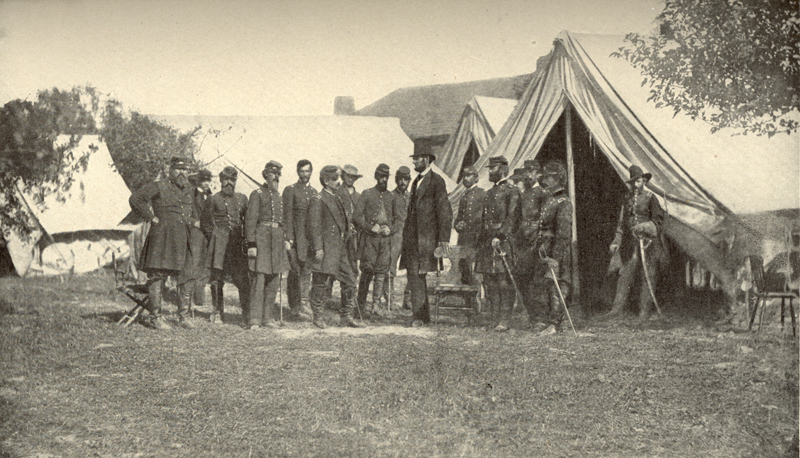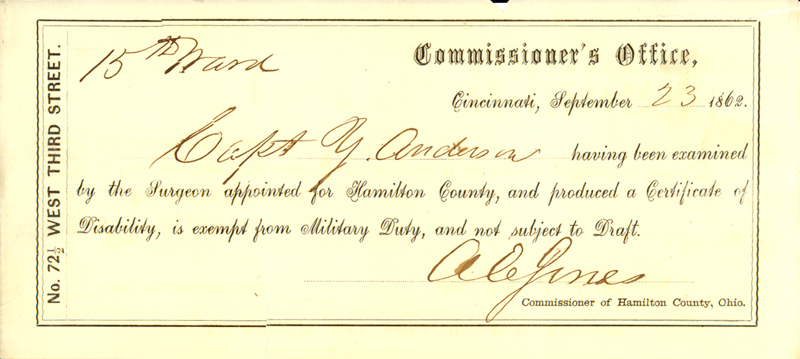By: Janice Schulz
The Archives and Rare Books Library’s collection of Hamilton County Civil War Exemptions is now available in digital format on the UC Libraries’ Digital Resource Commons. The collection consists of 102 documents dated from August-October, 1862, that can be searched, viewed, downloaded and printed. The documents in this collection were created as proof of exemption status under the Militia Act of 1862, which resulted in the first attempt to conscript Union soldiers in the Civil War. This collection represents a very small window in time during the long years of the Civil War, but it marks an important turning point in how the Union built its army.
The North expected a quick resolution to the problem of Southern resistance. But after a year of continued Confederate hostilities and unexpected Confederate victories, President Lincoln realized that he would need to throw more strength at the South. So on July 17, 1862 Lincoln signed the Militia Act into law to establish rules on how militias were to be formed. The act established rules about bounties as incentives, courts-martial, and the organization of various corps and set minimum and maximum ages for militia members. It also gave the President authorization to organize his corps as he wished, and to specify a length of militia service.

As he builds his militia, President Lincoln visits a Union headquarters camp on October 1, 1862. From Photographic History of the Civil War
When it was clear that a strictly volunteer army would not provide the strength needed to defeat the enemy, Lincoln issued an Executive Order on August 4, 1862, which established a draft. He ordered that 300,000 additional men be called into service to serve for nine months and tasked the Secretary of War with assigning quotas for each state. If a state did not meet its quota by August 15, the governor was to initiate a special draft. Ohio’s draft took place on October 5, 1862. Before that time men had the chance to apply for exemptions to the draft based on age, physical disability, and citizenship.
In 1863, the Enrollment Act replaced the Militia Act as the primary way for the Union Army to conscript soldiers. The Enrollment Act removed responsibility from the states and established a federal-level draft.
The digital collection can be found at http://drc.libraries.uc.edu/handle/2374.UC/689509. More Civil War materials available in the Archives & Rare Books Library can be found in our 150th Anniversary Commemoration exhibit at http://www.libraries.uc.edu/libraries/arb/exhibits/civil-war/index.html. For further information about ARB and its holdings, please call 513.556.1959, email archives@ucmail.uc.edu, or visit our website at http://www.libraries.uc.edu/libraries/arb/index.html.

